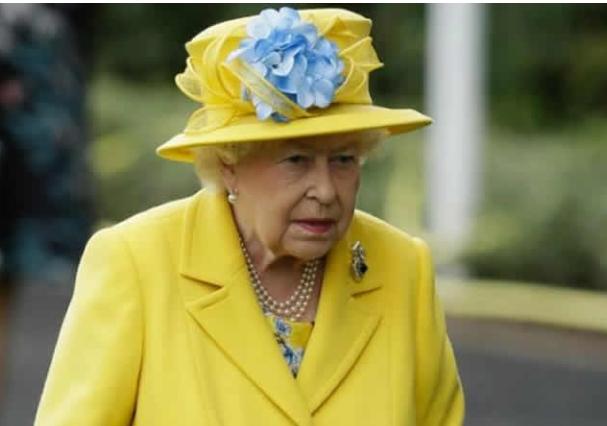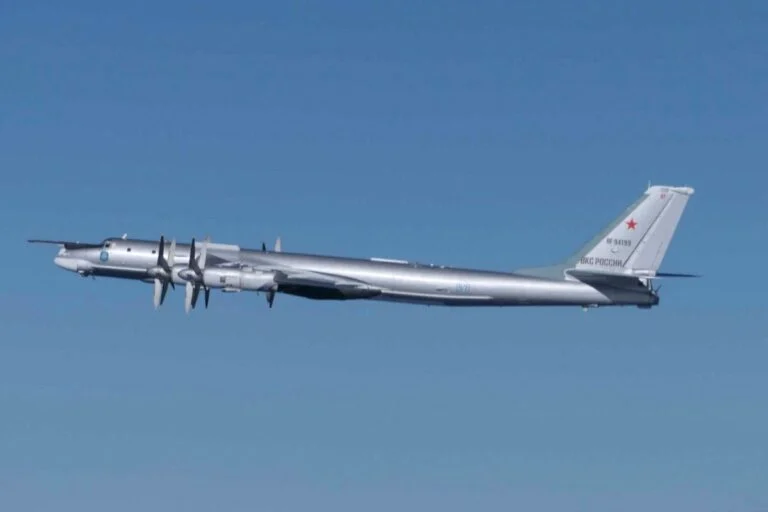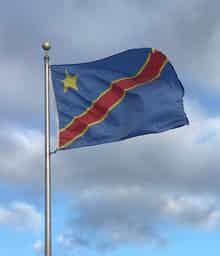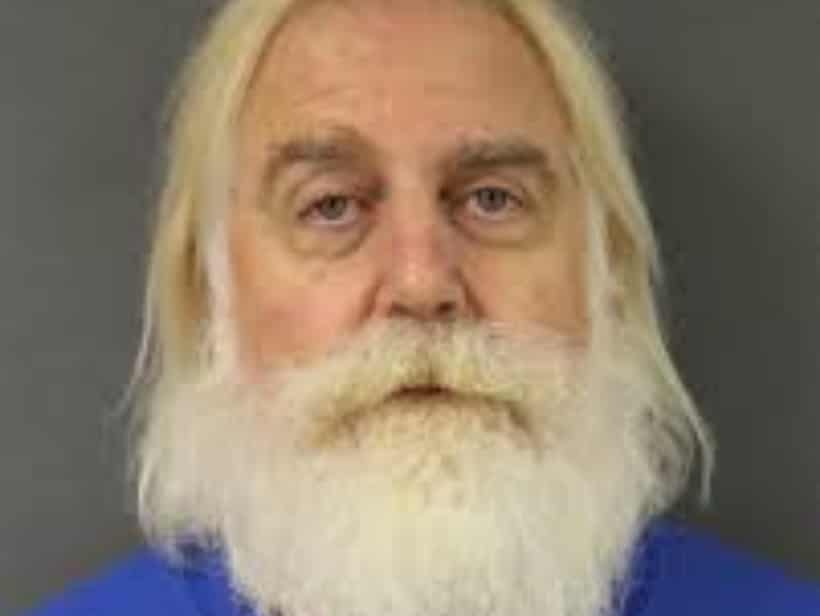Headline
What You Need To Know About Royal Funerals

Funerals for senior royals since World War II have tended to be very public affairs, with pomp, pageantry and popular fervour.
Queen Elizabeth II’s on Monday will be no exception.
– 1952: King George VI –
On February 6, 1952, King George VI died suddenly after a long illness at the age of 56.
At his funeral on February 15, his coffin was carried to Paddington station in west London on a gun carriage from Westminster Hall at the Palace of Westminster, where he lay in state, to St George’s Chapel, Windsor Castle.
A silent crowd lined the route along London’s foggy streets during the three-hour procession. His eldest daughter, who at the age of 25 had become Queen Elizabeth II, followed in a horse-drawn coach.
READ ALSO: Queen Elizabeth II’s State Funeral – What To Expect
A year later on March 24, George’s mother, the dowager Queen Mary, died aged 85. Over two days, 120,000 people paid homage at Westminster.
– 1979: Lord Mountbatten –
On August 27, 1979, Louis Mountbatten, the queen’s cousin and last viceroy of India, was killed at the age of 79, by an Irish Republican Army bomb placed on his boat.
The assassination rocked the United Kingdom. Mountbatten was a decorated naval commander, uncle of Queen Elizabeth II’s husband, Prince Philip, and mentor of the couple’s eldest son and heir, Prince Charles.
On September 5, hundreds of thousands of people gathered in London along with representatives of the British armed forces, US Marines, and French, Canadian, Indian and Burmese soldiers to pay him a solemn farewell.
An escort of six tanks took the coffin from Westminster Abbey to Waterloo station where it was transported to Romsey, near Southampton, southern England, for burial at the town’s abbey.
– 1997: Princess Diana –
On September 6, 1997, the country came to a standstill for the funeral of Diana, Princess of Wales, who died in Paris on August 31 in a car crash aged 36.
Her death sent shockwaves around the world. Millions of people lined the streets and an estimated 2.5 billion viewers watched the service on television.
When the procession passed Buckingham Palace, Queen Elizabeth II, who had been criticised for her stand-offish initial reaction to the death of the former wife of Prince Charles, publicly bowed her head.
READ ALSO: Biden Arrives UK For Queen Elizabeth’s Funeral
The couple’s two young sons, princes William and Harry, walked, heads bowed, behind their mother’s coffin. Diana was buried at Althorp, her family’s historic home in Northamptonshire, on an island in the middle of a lake.
Led by Queen Elizabeth II’s frail 101-year-old mother, also called Elizabeth, the royal family on February 15, 2002, laid to rest the monarch’s younger sister Princess Margaret, who had died six days earlier aged 71 after a series of strokes.
The private funeral was attended by about 450 family and friends, including 30 or so members of the royal family such as the queen, Margaret’s ex-husband Lord Snowdon, and her two children Viscount Linley and Lady Sarah Chatto.
Despite concerns over her own health, the Queen Mother attended the service at St George’s Chapel in Windsor Castle.
It was exactly 50 years since she had buried her husband, King George VI. In a break with royal tradition, Margaret was cremated.
– 2002: The Queen Mother –
Just seven weeks after Margaret, the Queen Mother, Queen Elizabeth, died in her sleep on March 30 at Windsor. Her funeral on April 9 marked the end of an era.
The royal matriarch was the last empress consort of India and a link to a bygone age. She was much loved as a symbol of resistance to the Nazi enemy during World War II.
Over four days, more than 200,000 people filed past her coffin paying their respects. Her funeral at Westminster Abbey was attended by 2,000 people.
More than a million people lined the 37-kilometre (23-mile) route taken by the funeral procession to Windsor, where she was interred with her husband at the King George VI memorial chapel, and alongside Margaret’s ashes.
– 2021: Prince Philip, Duke of Edinburgh –
Queen Elizabeth II’s husband of 73 years died on April 9, 2021, just a few months shy of his 100th birthday and after a lengthy stay in hospital for a heart condition.
READ ALSO: Putin Won’t Attend Queen Elizabeth’s Funeral – Kremlin
Coronavirus restrictions limited his funeral on April 18 to just 30 people, with social distancing, face masks — and no public crowds.
The duke’s coffin was borne to St George’s Chapel on a specially adapted Land Rover he had designed himself.
His remains were interred in the Royal Vault at Windsor, with instructions to be transferred on his wife’s death to the King George VI memorial chapel.
AFP
Headline
South Korea, Japan Protest China, Russia Aircraft Incursions

South Korea and Japan reacted furiously on Wednesday after Chinese and Russian military aircraft conducted joint patrols around the two countries, with both Seoul and Tokyo scrambling jets.
South Korea said it had protested with representatives of China and Russia, while Japan said it had conveyed its “serious concerns” over national security.
According to Tokyo, two Russian Tu-95 nuclear-capable bombers on Tuesday flew from the Sea of Japan to rendezvous with two Chinese H-6 bombers in the East China Sea, then conducted a joint flight around the country.
The incident comes as Japan is locked in a dispute with China over comments Prime Minister Sanae Takaichi made about Taiwan.
READ ALSO:China Backs Nigeria, Warns Against Foreign Interference
The bombers’ joint flights were “clearly intended as a show of force against our nation, Defence Minister Shinjiro Koizumi wrote on X Wednesday.
Top government spokesman Minoru Kihara said that Tokyo had “conveyed to both China and Russia our serious concerns over our national security through diplomatic channels”.
Seoul said Tuesday the Russian and Chinese warplanes entered its air defence zone and that a complaint had been lodged with the defence attaches of both countries in the South Korean capital.
“Our military will continue to respond actively to the activities of neighbouring countries’ aircraft within the KADIZ in compliance with international law,” said Lee Kwang-suk, director general of the International Policy Bureau at Seoul’s defence ministry, referring to the Korea Air Defence Identification Zone.
READ ALSO:Trial For South Korean Woman Accused Of ‘Suitcase Murders’ Starts Today
South Korea also said it deployed “fighter jets to take tactical measures in preparation for any contingencies” in response to the Chinese and Russian incursion into the KADIZ.
The planes were spotted before they entered the air defence identification zone, defined as a broader area in which countries police aircraft for security reasons but which does not constitute their airspace.
Japan’s defence ministry also scrambled fighter jets to intercept the warplanes.
Beijing later Tuesday confirmed it had organised drills with Russia’s military according to “annual cooperation plans”.
READ ALSO:South Korean Actress Kim Sae-ron Found Dead In Seoul Apartment
Moscow also described it as a routine exercise, saying it lasted eight hours and that some foreign fighter jets followed the Russian and Chinese aircraft.
Since 2019, China and Russia have regularly flown military aircraft into South Korea’s air defence zone without prior notice, citing joint exercises.
In November last year, Seoul scrambled jets as five Chinese and six Russian military planes flew through its air defence zone.
Similar incidents occurred in June and December 2023, and in May and November 2022.
READ ALSO:Russia Insists Ukraine Must Cede Land Or Face Continued Military Push
Meanwhile, Tokyo said Monday it had scrambled jets in response to repeated takeoff and landing exercises involving fighter jets and military helicopters from China’s Liaoning aircraft carrier as it cruised in international waters near Japan.
It also summoned Beijing’s ambassador after military aircraft from the Liaoning locked radar onto Japanese jets, the latest incident in the row ignited by Takaichi’s comments backing Taiwan.
Takaichi suggested last month that Japan would intervene militarily in any Chinese attack on the self-ruled island, which Beijing claims as its own and has not ruled out seizing by force.
AFP
Headline
Thousands Reported To Have Fled DR Congo Fighting As M23 Closes On Key City

Fierce fighting rocked the eastern Democratic Republic of Congo on Tuesday as the Rwanda-backed M23 militia rapidly advanced towards the strategic city of Uvira, with tens of thousands of people fleeing over the nearby border into Burundi, sources said.
The armed group and its Rwandan allies were just a few kilometres (miles) north of Uvira, security and military sources told AFP.
The renewed violence undermined a peace agreement brokered by US President Donald Trump that Kinshasa and Kigali signed less than a week ago, on December 4.
Trump had boasted that the Rwanda-DRC conflict was one of eight he has ended since returning to power in America in January.
READ ALSO:Ambassadorial Nominees: Ndume Asks Tinubu To Withdraw List
With the new fighting, more than 30,000 people have fled the area around Uvira for Burundi in the space of a week, a UN source and a Burundian administrative source told AFP.
The Burundian source told AFP on condition of anonymity he had recorded more than 8,000 daily arrivals over the past two days, and 30,000 arrivals in one week. A source in the UN refugee agency confirmed the figure.
The Rwanda-backed M23 offensive comes nearly a year after the group seized control of Goma and Bukavu, the two largest cities in eastern DRC, a strategic region rich in natural resources and plagued by conflict for 30 years.
Local people described a state of growing panic as bombardments struck the hills above Uvira, a city of several hundred thousand residents.
“Three bombs have just exploded in the hills. It’s every man for himself,” said one resident reached by telephone.
READ ALSO:South Africa Beat DR Congo In shootout To Finish Third At AFCON
“We are all under the beds in Uvira — that’s the reality,” another resident said, while a representative of civil society who would not give their name described fighting on the city’s outskirts.
Fighting was also reported in Runingo, another small locality some 20 kilometres (12 miles) from Uvira, as the M23 and the Rwandan army closed in.
Burundi views the prospect of Uvira falling to Rwanda-backed forces as an existential threat, given that it sits across Lake Tanganyika from Burundi’s economic capital Bujumbura.
The city is the main sizeable locality in the area yet to fall to the M23 and its capture would essentially cut off the zone from DRC control.
READ ALSO:Stampede Kills 37 During Army Recruitment In Congo Capital
Burundi deployed about 10,000 soldiers to eastern DRC in October 2023 as part of a military cooperation agreement, and security sources say reinforcements have since taken that presence to around 18,000 men.
The M23 and Rwandan forces launched their Uvira offensive on December 1.
Rich in natural resources, eastern DRC has been choked by successive conflicts for around three decades.
Violence in the region intensified early this year when M23 fighters seized the key eastern city of Goma in January, followed by Bukavu, capital of South Kivu province, a few weeks later.
– Regional risk –
The peace deal meant to quell the fighting was signed last Thursday in Washington by Congolese President Felix Tshisekedi and his Rwandan counterpart Paul Kagame, with Trump — who called it a “miracle” deal — also putting his signature to it.
READ ALSO:FULL LIST: US To Review Green Cards From 19 ‘Countries Of Concern’ After Washington Shooting
The agreement includes an economic component intended to secure US supplies of critical minerals present in the region, as America seeks to challenge China’s dominance in the sector.
But even on the day of the signing, intense fighting took place in South Kivu, where Uvira is located, which included the bombing of houses and schools.
Witnesses and military sources in Uvira said that Congolese soldiers fleeing the fighting had arrived in the city overnight Monday and shops were looted at dawn.
Several hundred Congolese and Burundian soldiers had already fled to Burundi on Monday, according to military sources, since the M23 fighters embarked on their latest offensive from Kamanyola, some 70 kilometres north of Uvira.
Since the M23’s lightning offensive early this year, the front had largely stabilised over the past nine months.
Burundian President Evariste Ndayishimiye warned in February there was a danger of the conflict escalating into a broader regional war, a fear echoed by the United Nations.
Headline
‘Santa Claus’ Arrested For Possessing, Distributing Child Sexual Abuse Material

A 64-year-old man from Hamilton Township has been arrested in the United States after investigators linked him to the possession and distribution of child sexual abuse material.
The suspect, identified as Mark Paulino, had been working as a “Santa for hire” at holiday events, a role that placed him in repeated contact with children.
Mercer County officials said the investigation began on 4 December when detectives were alerted to suspicious online activity involving the uploading of child pornography from a residence in Hamilton Township. The probe quickly identified Paulino, a retired elementary school teacher, as the person involved.
READ ALSO:Nigerian Ringleader Of Nationwide Bank Fraud, Money Laundering Jailed In US, Says FBI
Police stated that Paulino had presented himself online as a retired teacher and had recently performed as Santa Claus for photographs and private, corporate, and organisational events. “Because this role involved direct, repeated contact with children, detectives worked around the clock to secure a search warrant,” authorities explained.
The warrant was executed on 5 December, during which police seized multiple items regarded as evidentiary. Paulino was taken into custody without incident and charged with possession and distribution of child sexual abuse materials, as well as endangering the welfare of a child.
Prosecutors have filed a motion to detain him pending trial. The investigation remains ongoing, and authorities have urged members of the public with relevant information to come forward.

 Politics4 days ago
Politics4 days agoJUST IN: Tinubu Holds Closed-door Meeting With Rivers, Ebonyi Govs

 News4 days ago
News4 days agoWhy My Lineage Qualifies Me For Awujale Throne — K1 De-Ultimate

 Politics4 days ago
Politics4 days agoTinubu, Six APC Governors Hold Closed-door Meeting At Aso Villa

 News5 days ago
News5 days agoHow I and Obey’s Son Escaped Getting Caught In Benin’s Coup —Dele Momodu

 News4 days ago
News4 days agoGroup Wants Edo AG Professorship Investigated

 News4 days ago
News4 days agoGbaboyor’s Allegations Against Otuaro Baseless, Malicious — PAP Office

 Politics3 days ago
Politics3 days agoJUST IN: Fubara Dumps PDP For APC

 News4 days ago
News4 days agoStep-by-step Guide On How To Register For 2026 UTME

 News4 days ago
News4 days agoFG Offered 4,000 Pregnant Women Free C-section – Report

 News3 days ago
News3 days agoOtuaro: IPF Urges Reps To Take Caution Over Arrest Threat
































